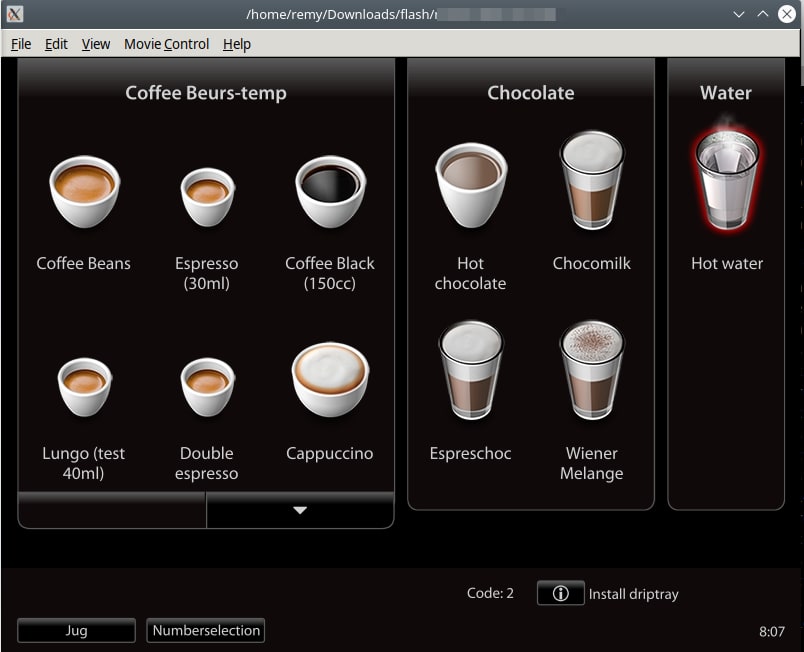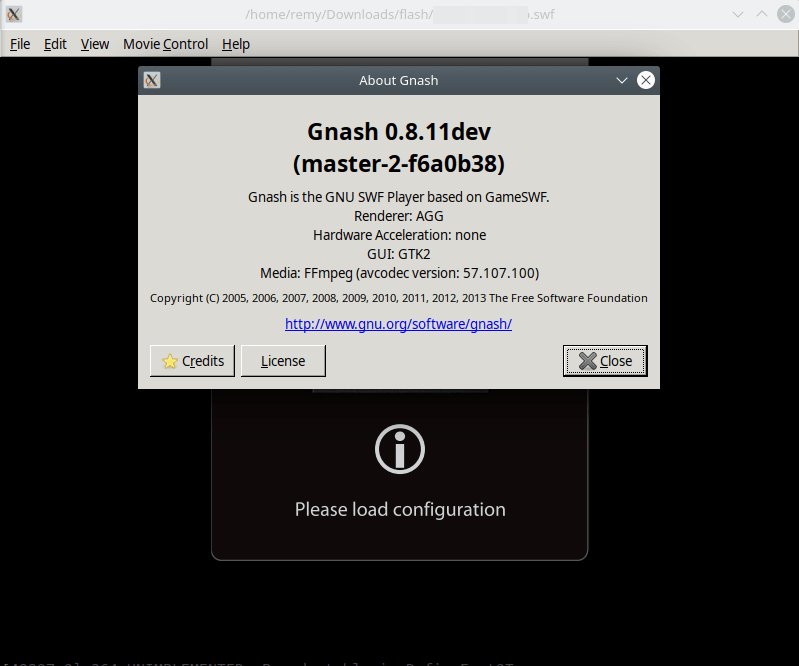



To use gnash on the command-line you can use use the command gnash-raymii ~/flash-file.swf.
To use the commands you must prefix them with the snap name. (gnash-raymii.dump-gnash).
GNU Gnash is the GNU Flash movie player — Flash is an animation file format pioneered by Macromedia which continues to be supported by their successor company, Adobe. Flash has been extended to include audio and video content, and programs written in ActionScript, an ECMAScript-compatible language. Gnash is based on GameSWF, and supports most SWF v7 features and some SWF v8 and v9. SWF v10 is not supported by GNU Gnash.
https://www.gnu.org/software/gnash/
The snap source code is here: https://github.com/RaymiiOrg/gnash-snap/
# Changelog
No new version of gnash will come out since development stopped around 2011, this is the changelog of the snap.
## 0.8.11-1
gnash-raymii is now the main package name and command (no longer required to write gnash-raymii.gnash)snapcraft.yml file to expose more gnash commands:dump-gnashgtk-gnashcygnalrtmpgetgprocessorflvdumpersoldumperTo use the commands you must prefix them with the snap name. (gnash-raymii.dump-gnash).
To use gnash on the command-line you can use use the command gnash-raymii ~/flash-file.swf.
## 0.8.11
You are about to open
Do you wish to proceed?
Thank you for your report. Information you provided will help us investigate further.
There was an error while sending your report. Please try again later.
Snaps are applications packaged with all their dependencies to run on all popular Linux distributions from a single build. They update automatically and roll back gracefully.
Snaps are discoverable and installable from the Snap Store, an app store with an audience of millions.

Snap can be installed from the command line on openSUSE Leap 15.x and Tumbleweed.
You need first add the snappy repository from the terminal. Choose the appropriate command depending on your installed openSUSE flavor.
Tumbleweed:
sudo zypper addrepo --refresh https://download.opensuse.org/repositories/system:/snappy/openSUSE_Tumbleweed snappy
Leap 15.x:
sudo zypper addrepo --refresh https://download.opensuse.org/repositories/system:/snappy/openSUSE_Leap_15.6 snappy
If needed, Swap out openSUSE_Leap_15. for, openSUSE_Leap_16.0 if you’re using a different version of openSUSE.
With the repository added, import its GPG key:
sudo zypper --gpg-auto-import-keys refresh
Finally, upgrade the package cache to include the new snappy repository:
sudo zypper dup --from snappy
Snap can now be installed with the following:
sudo zypper install snapd
You then need to either reboot, logout/login or source /etc/profile to have /snap/bin added to PATH.
Additionally, enable and start both the snapd and the snapd.apparmor services with the following commands:
sudo systemctl enable --now snapd
sudo systemctl enable --now snapd.apparmor
To install gnash-raymii, simply use the following command:
sudo snap install gnash-raymii
Browse and find snaps from the convenience of your desktop using the snap store snap.

Interested to find out more about snaps? Want to publish your own application? Visit snapcraft.io now.